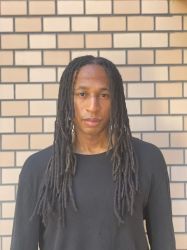
May 13, 2010
Rodchenko & Stepanova: Visions of Constructivism
There are Reds under the beds at Meguro’s palatial Teien Art Museum
By Metropolis
Originally published on metropolis.co.jp on May 2010

Aleksandr Rodchenko, “Lengiz. Books on all the branches of knowledge,” advertising poster for the Leningrad Department of Gosizdat (State Publishing House), 1924, gouaches and cut paper on photographic paper, mounted on cardboard, 63 x 88cm. ©The Pushkin State Museum of Fine Arts
With his intense, steely glare, muscular physique and shaven head, the Soviet artist and designer Aleksandr Rodchenko would have made the perfect Bond villain: “No, Mr. Bond, I don’t expect you to understand post-revolutionary Soviet art. I expect you to die!” Together with his wife and partner Varvara Stepanova (think: tank production line worker), Rodchenko was at the heart of the artistic and cultural ferment that preceded and followed the Russian revolution of 1917.
The pair’s work has now found an unlikely home at the former residence of Prince Asaka and Princess Nobuko, the beautiful Art Deco building and park that now serves as the Teien Art Museum. Although the art of Communist revolutionaries may seem a million miles away from the luxurious splendor once enjoyed by members of the Imperial family, aesthetically there is much to connect them. Both are infused with the spirit of modernity unleashed by the collapse of the old order following World War I.
But, while the experimentation of Art Deco was restrained by the marketplace and the need to present a “product” that still appealed to bourgeois sensibilities (a good reference is the recent Tamara de Lempicka exhibition at the Bunkamura), the Constructivist movement, which Rodchenko and Stepanova helped to pioneer, followed the logic of industrial expediency to its limits, combined with a strong sense of iconoclasm for traditional art. The emphasis was on breaking with the past and justifying aesthetics by their social utility—often, ironically enough, with a very bourgeois sense of self-dramatization.
The exhibition, which is mainly sourced from Moscow’s Pushkin Museum, includes Rodchenko’s famous “Death of Painting” series from 1921, when the Bolshevik artist exhibited three monochromatic canvases, each in one of the three primary colors, and declared that “art” was now dead.
The implication of the three paintings is not only that Rodchenko was bookending the history of art, but that, like a scientist splitting the atom, he had reduced light—the medium of all art—into its component parts. Although extremely boring to look at, this chromatic triptych is a fascinating example of the megalomaniac tendencies of the intensely driven avant-grade artist.

Aleksandr Rodchenko (text by Vladimir Mayakovsky), “There was no better and there are no better baby dummies...,” advertising poster for the Rezinotrest (“Rubber Trust”) company, 1923, gouaches and cut paper on photographic paper, mounted on cardboard, 98.5 x 69cm. ©The Pushkin State Museum of Fine Arts
Another noticeable point about “The Death of Painting” is how bad the colors look. “Pure Blue Color” is almost black and “Pure Yellow Color” is the sickly shade of pus from a gangrenous wound. Luckily, for a card-carrying member of the Communist party, “Pure Red Color” is still holding up quite well.
The poor color quality control hints at the inefficiencies of the Soviet-planned economy. Tragically, 1921 was also the year of a major famine caused by Socialist disruption of the traditional agricultural economy, which killed an estimated 5 million people. This led to the New Economic Policy (1921-28), a U-turn that partially revived a capitalist system. Some small-scale free enterprise was allowed, and large state-owned corporations tried to ape the consumer-appeal techniques used in the West. During this period, Rodchenko and Stepanova designed posters intended to stimulate consumer demand.
This is Rodchenko’s main legacy. Using daring blocks of color, simple geometric shapes, vivid fonts and simple messages, his eye-catching posters are still an inspiration to graphic designers, the advertising industry, and even the occasional rock band—Franz Ferdinand’s album cover for 2005’s You Could Have it So Much Better featured Rodchenko’s iconic design for a poster advertising books. Stepanova’s fabric patterns and costume designs have a similar appeal for fashion students.
This appeal for the younger generation reveals the exhibition’s real agenda, which is not to promote “world socialist revolution” but to broaden the Teien’s usual obasan demographic by drawing in a younger, cooler, student-y crowd.
Tokyo Metropolitan Teien Art Museum
Aleksandr Rodchenko and Varvara Stepanova: Visions of Constructivism. Various media. Until June 20, ¥550 (HS and under, 65 and over)/¥880 (univ)/¥1,100 (general). 5-21-9 Shirokanedai, Minato-ku. Tel: 03-3443-0201. Open daily 10am-6pm. Nearest stn: Meguro, west exit or Shirokanedai, exit 1. www.teien-art-museum.ne.jp







